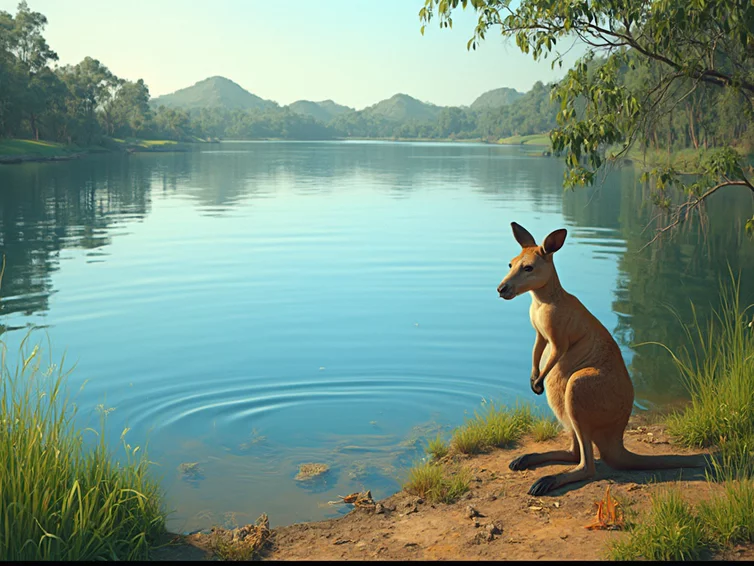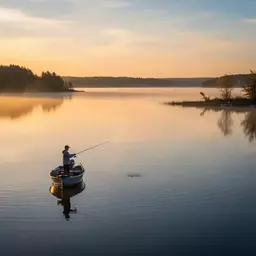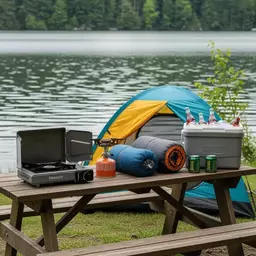Lake Keepit's Unique Ecosystem
- • Diverse Habitats: Woodlands, wetlands, grasslands.
- • Adapted Species: Thrive in a semi-arid environment.
- • Conservation: Safeguarding natural resources.

Have you ever wondered how a unique ecosystem influences the behavior of its wildlife? At Lake Keepit, the fascinating interplay between the semi-arid environment and its native animals offers insights that go beyond mere observation.
Delve into the core elements that define Lake Keepit's unique environment and the essential practices for responsible wildlife watching. This visual highlights the interplay of habitats and the crucial role of ethical observation.
As you explore the stunning landscapes of Lake Keepit, you'll quickly realize that the area is not just breathtaking—it's a thriving ecosystem teeming with native wildlife. In this region, the unique semi-arid environment plays a significant role in shaping the habitats and behaviors of local animals. From the lush woodlands to the sun-kissed shores, the diversity of flora and fauna here is truly remarkable!
Understanding this ecosystem is crucial for appreciating the intricate connections between the plants and animals that call Lake Keepit home. The interplay between the varying landscapes creates a mosaic of habitats, each supporting different species. For instance, the wetlands are vital for many migratory birds, while the arid bushland hosts unique reptiles and mammals. By recognizing the importance of these habitats, we foster a deeper appreciation for the conservation of our natural resources.
Lake Keepit is characterized by its semi-arid climate, which influences the variety of wildlife present in the area. This environment supports a unique blend of species that have adapted to the specific challenges and opportunities it offers. Exploring the microhabitats, such as rocky outcrops and hidden waterholes, reveals the intricate web of life that thrives in these conditions. As you wander through the landscape, take a moment to appreciate how these elements work together to sustain a vibrant ecosystem.
By delving into the details of Lake Keepit's ecosystem, we can all become better stewards of the nature around us. It’s essential to recognize how our actions can impact the delicate balance of wildlife and their habitats, especially in today’s rapidly changing environment.
Wildlife watching isn't just a pastime; it plays a crucial role in conservation and biodiversity efforts. The more we observe and understand the animals at Lake Keepit, the more we can contribute to their protection. Every visit to this beautiful region offers a chance to witness nature’s wonders and reflect on our responsibility as guardians of the environment.
When you engage in wildlife watching, you not only enjoy the thrill of spotting local species but also support conservation efforts. Here are some ways you can help while visiting:
By understanding the importance of wildlife watching, we can foster a culture of respect and conservation that benefits both visitors and the incredible animals of Lake Keepit. So, grab your binoculars and get ready to explore this vibrant ecosystem—your adventure awaits!
When observing wildlife at Lake Keepit, consider using a field guide or a wildlife app on your smartphone. This not only enhances your experience by helping you identify different species but also allows you to track your sightings, contributing valuable data to local conservation efforts!
As we wrap up our exploration of the wildlife at Lake Keepit, it's clear that this stunning region is home to a remarkable range of native animals. From the soaring birds that grace our skies to the elusive mammals roaming the woodlands, Lake Keepit’s biodiversity is nothing short of awe-inspiring. Whether you’re spotting an echidna for the first time or listening to the melodic calls of local birds, each encounter is a cherished memory waiting to be made.
Throughout this guide, we’ve highlighted the unique ecosystem that supports these creatures, emphasizing the importance of conservation and responsible wildlife viewing practices. By immersing yourself in this vibrant environment, you not only gain a deeper appreciation for nature but also contribute to its preservation.
Responsible wildlife observation isn’t just a guideline; it’s a commitment we make as nature enthusiasts to ensure that both animals and visitors coexist peacefully. Here are some key practices to keep in mind:
By following these practices, we can foster a harmonious relationship with the wildlife that calls Lake Keepit home. Our responsibility extends beyond just observation; it’s about being active stewards of the land!
Lake Keepit boasts diverse habitats including woodlands, wetlands, and grasslands, each supporting a unique array of wildlife. For more information on the area's wildlife, visit the NSW National Parks and Wildlife Service website.
Many species at Lake Keepit have developed unique adaptations to thrive in the semi-arid climate, showcasing nature's resilience. These adaptations can include specific foraging behaviors, water conservation strategies, and nocturnal activity patterns.
Understanding local ecosystems is vital for conservation efforts and fostering environmental stewardship. It helps us appreciate the intricate connections between flora and fauna and guides effective strategies for protecting biodiversity. You can learn more about wildlife in NSW and conservation efforts on the NSW Environment Protection Authority website.
Responsible wildlife observation practices include maintaining safe distances from animals, minimizing noise, adhering to local guidelines and regulations, and always practicing "Leave No Trace" principles to protect the environment.
You can contribute to conservation by practicing ethical observation, participating in local conservation initiatives, and spreading awareness about the importance of wildlife protection. Using field guides or wildlife apps to track sightings can also provide valuable data for conservation.
Ready to embark on your own wildlife adventure at Lake Keepit? I encourage you to plan your visit and embrace the wonders that await! Here’s how you can make the most of your trip:
Let the beauty of Lake Keepit inspire your next outdoor adventure! Whether it's a day trip or a weekend getaway, you’ll create unforgettable memories while exploring the rich wildlife that this region has to offer. I can't wait to hear about your experiences!
Here is a quick recap of the important points discussed in the article:
Fishing Spots and Techniques at Keepit

Have you ever thought about the thrill of casting your line into waters rich with life? Lake Keepit
Budget Camping Gear for Weekends

As you prepare for your next weekend adventure, imagine setting up a cozy campsite surrounded by bea
Planning a Day at Lake Keepit
Fishing Spots and Techniques at Keepit
Budget Camping Gear for Weekends
Wildlife Fun for Families at Keepit
Maintain Your Gear for Longevity